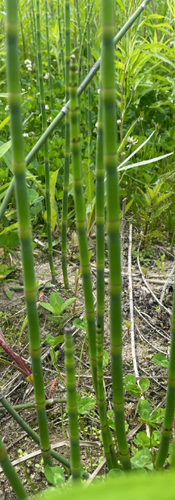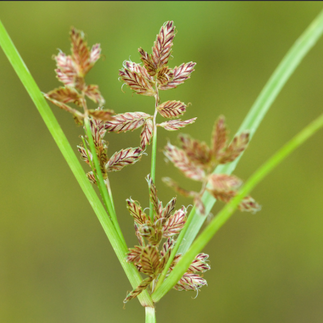Woodbine Beach, Dunes Ecosystem, Biodiversity, 2025 updated report.
- noam195
- Jul 17, 2022
- 3 min read
Updated: Aug 9
Last updated: August 9, 2025

Report prepared by:
Noam Markus
Clyde Robinson
Reviewed by:
Autumn Jordan - Urban Nature Organizer, Nature Canada
Ann Purvis - Toronto Nature Stewards
Jean Iron - Former President - Ontario Field Ornithologists
Ron Pittaway - Biologist, Ontario Ministry of Natural Resources, retired.
Bob Kortright - Former President - Toronto Field Naturalists
Owen Strickland - Citizen Scientist. Toronto,Ward 19.
John Nishikawa - Former President - Toronto Ornithological Club, co-chair of Nature Canada's Bird Friendly City - Toronto Team.
David Beadle - Entomologist, co-author and illustrator - "Peterson Field Guide To Moths Of Northeastern North America".
Summary
This report documents the rich biodiversity found within the habitat at West Woodbine Beach in Toronto, Ontario. The observations have been by citizen scientists, confirmed by local experts and through iNaturalist. It is hoped that this report will help the public and Toronto City Hall officials, be more aware of the rich biodiversity within the habitat as there is no current, official plant inventory by Toronto and Region Conservation Authority (TRCA).
To date over 1016 species of flora and fauna have been documented.
Location
The habitat is located at the west end of the largest beach in Toronto. Nestled between Ashbridge's Bay Park and Woodbine Beach. Ward 19, Toronto.
It is a flood zone.
Size: approximately 3.2 hectares.
Soil: sand and organic material from floods.


Photos: Google Earth
The habitat is a natural feature, part of the Natural Heritage System. The land is owned by TRCA and managed by the City of Toronto.
Since 2017 the City of Toronto has encouraged this habitat to naturalize.
2019 - TRCA treated the habitat with Phragmites control. Unfortunately, the Phragmites is back and we hope TRCA will take steps to control it again.
2020 - TRCA planted trees on the south/east corner of the habitat.
Since 2017 the habitat has evolved into a type of Vegetation Community that is rare in Toronto.
Ranking is based on TRCA data:
L2 -L3 = Species of Regional Conservation Concern.
L4 = Species of Urban Concern.
L5 = species that are considered secure throughout the region.
To date, 210 species of flora have been documented:
4 species ranked L2
Umbrella Flatsedge (Cyperus diandrus). This rare plant species, thought to have been extirpated from the region, was documented in the habitat in 2020 and will be
upgraded to L2 ranking. First regional observation in over 100 years, from this habitat!
Schweinitz's umbrella-sedge (Cyperus schweinitzii) - L2
Shining Ladies’ Tresses (Spiranthes Lucida) - L2\
Great Plains Ladies’ Tresses (Spiranthes magnicamporum)
11 species ranked L3:
Fen Orchid (Liparis loeselii) - L3
Shining Flatsedge (Cyperus bipartitus) - L3
Switchgrass (Panicum virgatum) - L3
Hardstem Bulrush (Schoenoplectus acutes) - L3
Small's Spike-rush (Eleocharis palustris) -L3
Slender False Foxglove (Agalinis tenuifolia) - L3
Bushy Cinquefoil (Potentilla supina)- L3
Smooth Blue Aster (Symphyotrichum laeve) - L3
False Dragonhead - Obedient Plant (Physostegia virginiana) -L3
Sphinx Ladies’ Tresses (Spiranthes incurva) -L3
Yellow-green Sedge (Carex flava)- L3
16 species ranked L4:
Three-square Bulrush (Schoenoplectus pungent) - L4
Square-stemmed (Allegheny) Monkey-flower ( Mimulus ringens ) -L4
Torrey's rush (Juncus torreyi) -L4
Common Boneset (Eupatorium perfoliatum) -L4
Baltic Rush (Juncus balticus) - L4
Knotted Rush (Juncus nodosus) - L4
Variegated Horsetail (Equisetum variegatum) - L4
Swamp Milkweed (Asclepias incarnata) -L4
Common Arrowhead (Sagittaria latifolia)- L4
Broad-leaved Cattail (Typha latifolia) -L4
Soft Rush (Juncus effusus) -L4
Bottlebrush (Porcupine) Sedge (Carex hystericina) -L4
Virginia Pepper-grass (Lepidium virginicum) - L4
Soft-stemmed Bulrush (Schoenoplectus tabernaemontani) - L4
River Wild Rye (Elymus riparius) - L4
Wooly Sedge (Carex pellita)
Umbrella Flatsedge, L2. Photo by Owen Strickland Fen Orchid, L3. Photo by Anne Purvis Allegheny Monkeyflower, L4. Photo by Brian Stahls
To date, 788 species of fauna have been documented:
Confirmed nesting birds:
Killdeer (L4). Ground nester.
Savannah Sparrow (L4). Ground nester.
Song Sparrow (L5). Ground nester.
Red-winged Blackbird (L5).
Yellow Warbler (L5).
Spotted Sandpiper (L4) Ground nester.
Killdeer - L4 Savannah Sparrow - L4

Photo: Migrating Semipalmated Sandpipers (Near Threatened).
36 species of sandpipers, plovers and gulls have been documented feeding on the habitat.
Shorebirds suffer globally from loss of breeding and migration stop-over, feeding habitat.
577 species of insects including over 300 species of pollinators.
The habitat is a breeding, feeding and an important migration stopover location for the Monarch, many other insects and birds.
Please see the Mayor's pledge to protect the Monarch and The David Suzuki Foundation Monarch Pledge.
Mammals:
Coyote - L4
Red Fox- L4
Virginia Opossum- L4
American Mink - L4
Striped Skunk- L5
Bats (Big Brown Bat -L4)
Common Racoon- L5
Eastern Gray Squirrel -L5
Public Usage
This area is utilized year-round by hundreds of nature lovers from all walks of life who enjoy this wild patch of urban nature in an otherwise, well manicured park.
The report will continue to be updated throughout the seasons. There are always new discoveries.
*All photos by Noam Markus unless stated otherwise




























Comments